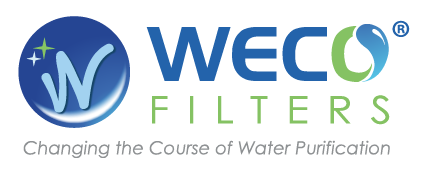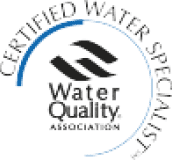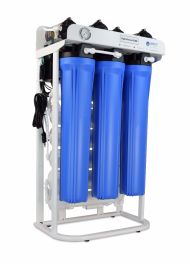- Activated Aluminais a pre-conditioned (acidified) granular aluminum oxide used for residential and industrial feed waters to reduce arsenic and fluoride levels.
- Activated Alumina receives a special acid washing treatment to lower the internal pH of the raw media. Both arsenic and fluoride removal are negatively impacted by high pH. Activated Alumina is based on a raw product that is NSF-61 listed and represents a BAT (Best Available Technology) by the US EPA.
DI-tech Specialty Media for Fluoride and Arsenic Removal NSF Certified
Activated Alumina Pre-Conditioned for Higher Selectivity
DI-tech Activated Alumina is a pre-conditioned (acidified) granular aluminum oxide used for residential and industrial feed waters to reduce arsenic and fluoride levels. DI-tech Activated Alumina receives a special acid washing treatment to lower the internal pH of the raw media. Both arsenic and fluoride removal are negatively impacted by high pH. DI-tech Activated Alumina is based on a raw product that is NSF-61 listed and represents a BAT (Best Available Technology) by the US EPA.
Physical and Chemical Properties
| Media Structure: | Acidified Granular Aluminum Oxide media. |
| Functional Groups | Oxide (hydroxyl) |
| Ionic Form as Shipped | Slightly Cationic |
| Physical Form | White grains |
| Total Capacity | 1.5-2.0% by weight |
| Screen Size Distribution: | 14x28 Tyler Mesh 16-30 US Standard |
| Uniformity Coefficient | 1.3 (max) |
| Surface Area | 380 m2/gm |
| pH Range Stability | 5-9 operating |
| Temperature Range | 40-180oF (5-80oC) |
| Shipping Weight: | 40 lbs per cubic foot |
| Packaging | 28.32 liter (1 cu ft) boxes 5 cu ft fiber drums |
| Also Available | 28x48 (30-50 mesh) |
Grade Information
DI-tech Activated Alumina is a frequently used media in municipal water treatment for the removal of arsenic and fluoride. It is listed by the US EPA as a BAT for these uses. As a raw product, activated alumina contains Na2O (sodium oxide) which converts to NaOH (sodium hydroxide) in water producing a very high pH and rendering its capacity to near zero. Regeneration is with caustic and acid so the media must be pre-conditioned before use unless the user has the ability to handle those harsh chemicals. DI-tech Activated Alumina is listed as NSF-61 for safety.
Regeneration and Pre-Treatment
DI-tech Activated Alumina can be field regenerated using first, a dilute solution of NaOH to strip the arsenic and fluoride. The media is then rinsed with feed water and the neutralized with a dilute solution of H2SO4 or HCl followed by a full rinse with clean water. Regeneration details are available from Systematix Co.
Optimizing with Pre-Treatment
Activated alumina capacity reduced by high pH (above 8.2) and bi-carbonate alkalinity (above 50 ppm) in the feed water. In such cases, pre-treating the feed water with a salt regenerated strong base anion (SBA) resin (a dealkalizer) will both reduce the pH AND the alkalinity. In addition, SBA resin has a modest capacity to reduce the arsenic and fluoride content of the feed stream, prolonging the capacity and life of the alumina polisher.
Design Conditions
Optimal flow conditions in use are 1.5-2.5 gpm/cu ft of media. Higher flows with minimal retention time will reduce capacity and increase average leakage. Backwashing is done at 10 gpm/sq. ft. for 10 minutes every 4-7 days.
A single family home might use 120,000 gallons of water/year…about 1 million pounds. Capacity of 1.5% means a cu ft. (40 lbs) of AA can remove 0.6 lbs of contaminant. At 1.2 ppm of fluoride, this is about 50,000 gallons.
Safety Information
A material safety data sheet is available for DI-tech Activated Alumina. Copies can be obtained from WECO FILTERS. DI-tech Activated Alumina is not a hazardous product and is not WHMIS controlled.













